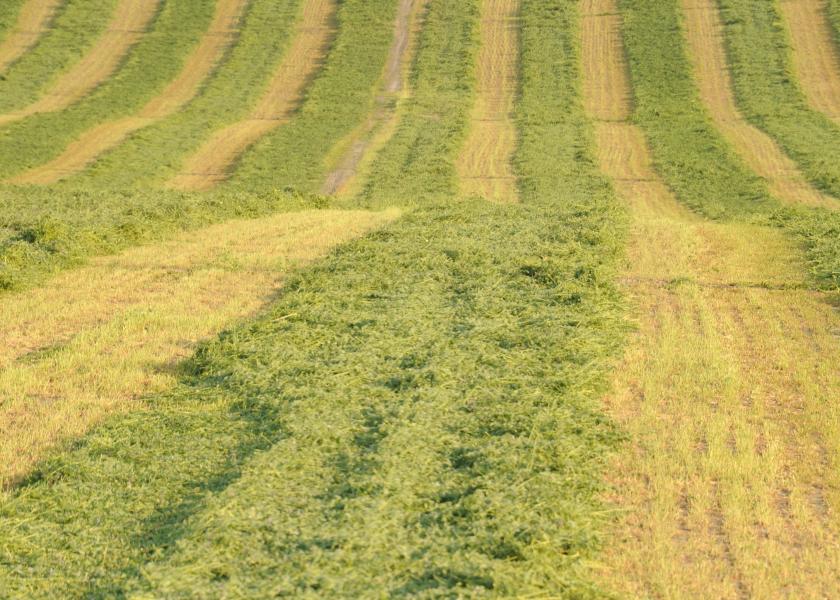Stretch Limited Forage Supplies

An extremely wet year and late hay harvests in some areas of the country, particularly in the Northeast and Midwest, mean some dairy farmers may have one less cutting of alfalfa this year. Worse, forage quality due to delayed harvest also might be low.
There are a number of things you can do now to stretch forage supplies, says Maurice Eastridge, an Extension dairy specialist with Ohio State University. “Management strategies need to be initiated now to deal with these situations,” he says.
First and foremost, work with your nutritionist to re-formulate diets for lower forage levels. “Diets typically contain 21 to 23% forage neutral detergent fiber (FNDF), but diets with as low as 16% can be fed with the proper balancing of the diet for starch,” he says. Be sure to provide adequate particle size. Plus, a buffer might be needed to help maintain rumen pH.
Do everything you can to reduce shrink during forage harvest, storage and feed out. Also consider selling unprofitable cows, non-pregnant cows late in lactation and extra heifers. “Generally, 0.85 to 1 heifer for every cow is sufficient on the farm, but some farms carry 1.2 heifers for every cow,” Eastridge says.
If you can, make plans to harvest additional corn silage this fall, possibly from neighbors. Diets with corn silage as the sole forage can be fed, but these rations must be carefully balanced and cows carefully monitored. Read more here.
Even more tips on stretching forage inventory can be found here.







